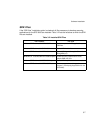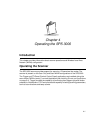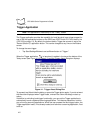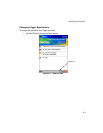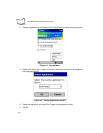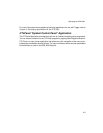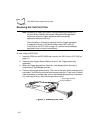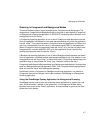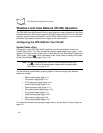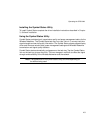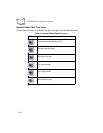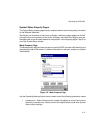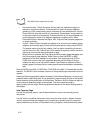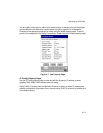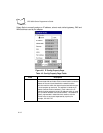
4-7
Operating the SPS 3000
Scanning in Foreground and Background Modes
There are two basic types of scanning applications: Foreground and Background. The
designations Foreground and Background refer to the type of read requests (Foreground
or Background) issued by the application. It DOES NOT necessarily refer to whether or not
the application has the "focus."
A Foreground scanning application is one in which Foreground read requests are issued.
Such an application is expected to have read requests pending only when the application
has the "focus." This means that when a Foreground scanning application is visible to the
user (e.g., the application has the "focus"), scanned data goes ONLY to that application.
When a Foreground scanning application loses the "focus" (e.g., the user no longer sees
the application), scanned data WILL NOT go to that application (since it cancels any
pending read requests when it loses the "focus").
A Background scanning application is one in which Background read requests are issued.
Such an application is allowed to have read requests pending at any time, whether or not
the application has the "focus" (e.g., is visible to the user). On receiving scanned data, the
application may or may not take the "focus" (e.g., becomes visible to the user).
Foreground read requests take precedence over Background read requests. Scanned data
goes to a Background scanning application ONLY if the Foreground scanning application
does not have the "focus" with read requests pending.
ScanSamp2 can be a Foreground or Background scanning application, but defaults to
Foreground (this can be changed via the User Interface). ScanWedge is a Background
Scanning application.
Using the ScanWedge Systray Application for Background Scanning
ScanWedge can be used to allow non-scanning aware applications to support bar code
input. When launched, it resides in the system tray. If the foreground window allows
keyboard input (such as the “Notes” application), all scanned data is typed into the field
where the cursor resides.



